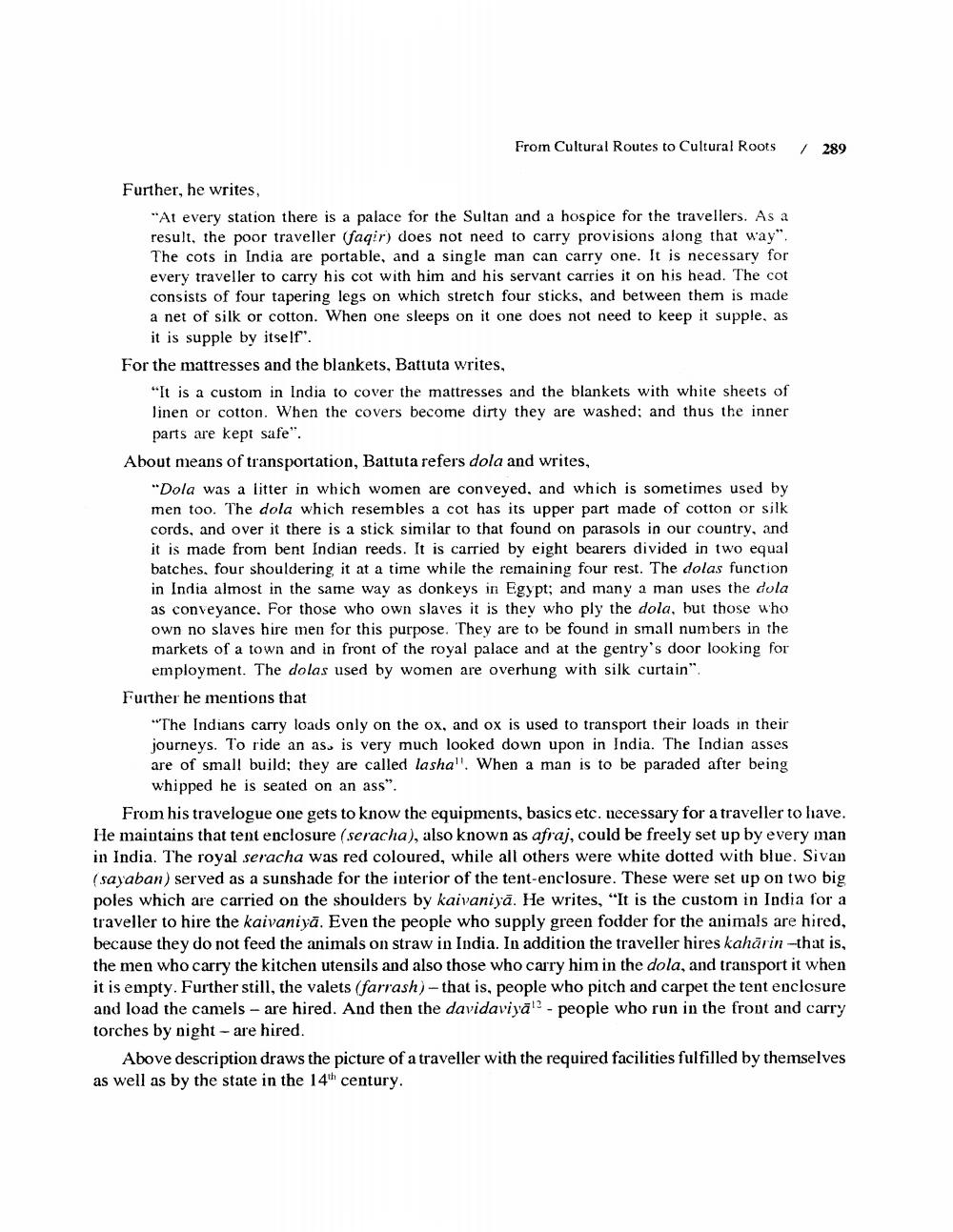________________
From Cultural Routes to Cultural Roots
Further, he writes,
"At every station there is a palace for the Sultan and a hospice for the travellers. As a result, the poor traveller (faqir) does not need to carry provisions along that way". The cots in India are portable, and a single man can carry one. It is necessary for every traveller to carry his cot with him and his servant carries it on his head. The cot consists of four tapering legs on which stretch four sticks, and between them is made a net of silk or cotton. When one sleeps on it one does not need to keep it supple, as it is supple by itself".
For the mattresses and the blankets, Battuta writes,
"It is a custom in India to cover the mattresses and the blankets with white sheets of linen or cotton. When the covers become dirty they are washed; and thus the inner parts are kept safe".
About means of transportation, Battuta refers dola and writes,
"Dola was a litter in which women are conveyed, and which is sometimes used by men too. The dola which resembles a cot has its upper part made of cotton or silk cords, and over it there is a stick similar to that found on parasols in our country, and it is made from bent Indian reeds. It is carried by eight bearers divided in two equal batches, four shouldering it at a time while the remaining four rest. The dolas function in India almost in the same way as donkeys in Egypt; and many a man uses the dola as conveyance. For those who own slaves it is they who ply the dola, but those who own no slaves hire men for this purpose. They are to be found in small numbers in the markets of a town and in front of the royal palace and at the gentry's door looking for employment. The dolas used by women are overhung with silk curtain".
Further he mentions that
"The Indians carry loads only on the ox, and ox is used to transport their loads in their journeys. To ride an ass is very much looked down upon in India. The Indian asses are of small build; they are called lasha". When a man is to be paraded after being whipped he is seated on an ass".
/ 289
From his travelogue one gets to know the equipments, basics etc. necessary for a traveller to have. He maintains that tent enclosure (seracha), also known as afraj, could be freely set up by every man in India. The royal seracha was red coloured, while all others were white dotted with blue. Sivan (sayaban) served as a sunshade for the interior of the tent-enclosure. These were set up on two big poles which are carried on the shoulders by kaivaniyā. He writes, "It is the custom in India for a traveller to hire the kaivaniya. Even the people who supply green fodder for the animals are hired, because they do not feed the animals on straw in India. In addition the traveller hires kaharin-that is, the men who carry the kitchen utensils and also those who carry him in the dola, and transport it when it is empty. Further still, the valets (farrash) - that is, people who pitch and carpet the tent enclosure and load the camels - are hired. And then the davidaviyā - people who run in the front and carry torches by night - are hired.
Above description draws the picture of a traveller with the required facilities fulfilled by themselves as well as by the state in the 14th century.




